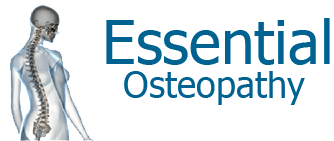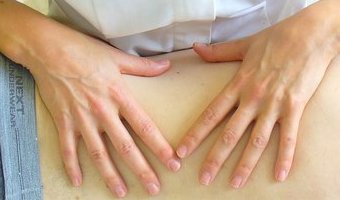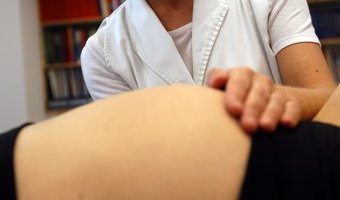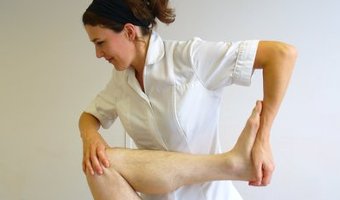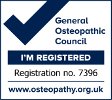Tooth and facial pain - explanation and treatment
A number of patients have presented to me recently with quite severe tooth and/or facial pain not realising that Osteopaths treat these problems successfully. These patients have often had problems for a while and have sought relief from their dentists with little success despite the dentists doing a lot of unnecessary treatment. Many of these cases have not had successful resolution because the dentist have seemingly completely overlooked myofascial pain caused by trigger points.
The tooth pain often comes from muscles referring pain in a distinct pattern to the tooth rather than issues with the tooth itself. As with tooth pain, headaches, earache, tinnitus, jaw joint pain (TMJ syndrome) and pain in a number of areas of the face also can originate from
very tight areas in the muscles of the face or neck called trigger points – in some cases quite far away from where the pain is being experienced. Bruxism (jaw clenching or grinding) can make these trigger points tighter and more sensitive and can be the main cause of facial and tooth pain.
Three muscles which cause a lot of dental complaints are – masseter, temporalis and digastric. The crosses denote the tightest and most sensitive a
rea of the muscle (trigger points) and the red solid areas and dots show where the pain refers. It highlights how you can have pain resulting from tension in muscles quite distanced from the actual trigger point source.
Masseter – is the strongest muscle in the body (pound for pound) and is your primary chewing muscle which covers the sides of the jaw just behind the cheek. It’s responsible for clenching your jaw and grinding your teeth (bruxism) and tempero-mandibular (TMJ) syndrome or jaw joint pain. It is one of the most common locations for trigger points in the human body. It refers pain to the back top and bottom teeth.
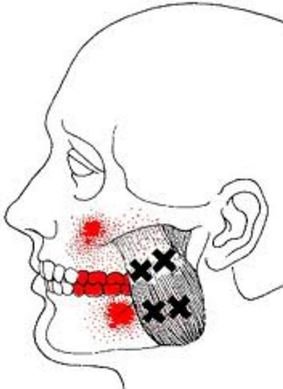
Temporalis – refers pain to the whole set of upper teeth (moving back tooth by tooth according to the location of the trigger point)

Digastric – refers pain only to the front bottom teeth.
(Images from Dr. Janet Travell & Dr David Simons – Myofascial Pain & Dysfunction: The Trigger Point Manual)

Test 1 – Jaw opening – Face a mirror and place your first two fingers over your tempero-mandibular joint (TMJ) on either side and slowly open and close your jaw. You should see smooth straight opening and closing and should not feel or hear any clicks or grinding.
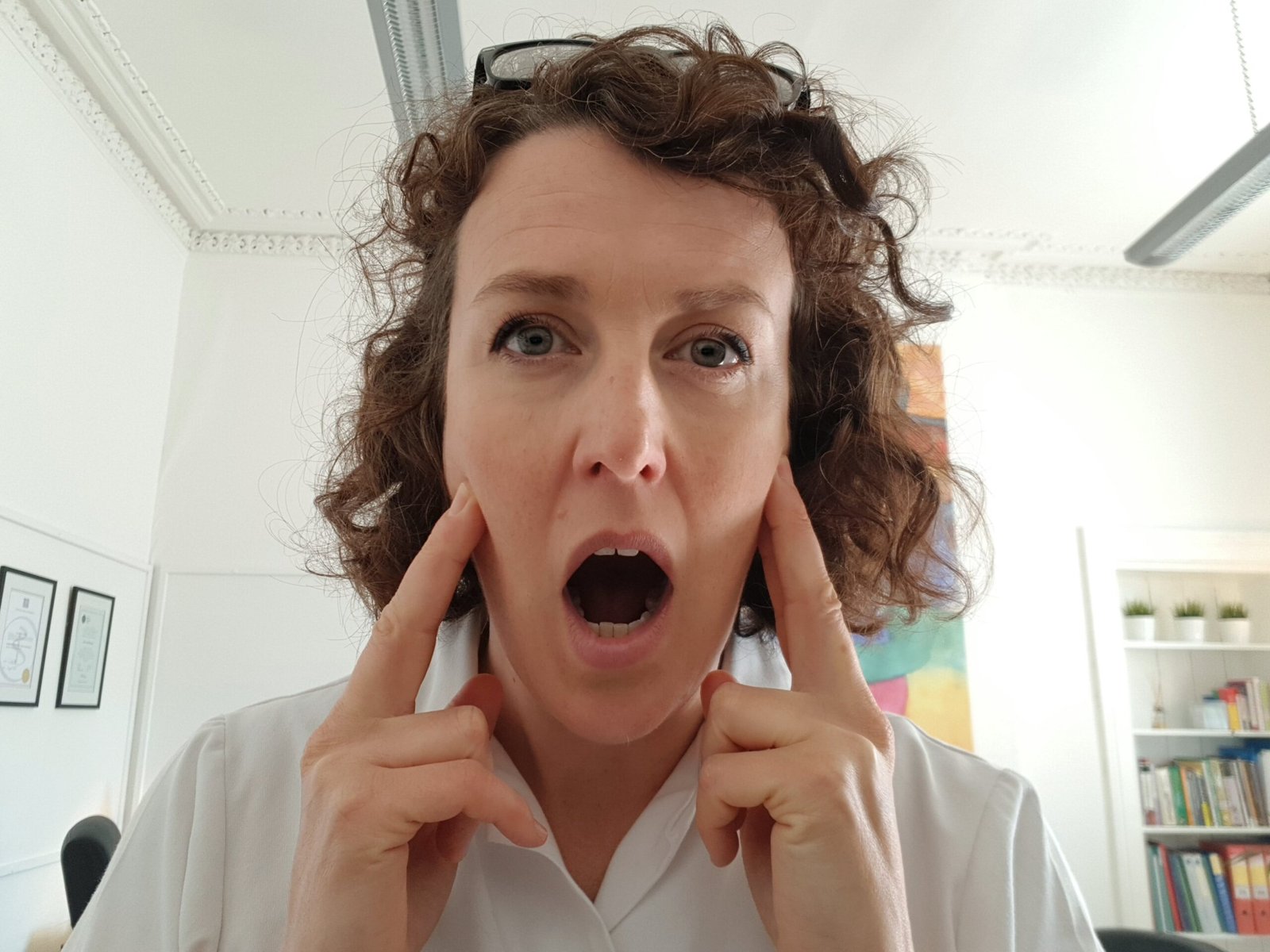
Test 2 – Two-knuckle jaw opening – Try to place two knuckles of your non-dominant hand in between your top and bottom incisors (front teeth). If your jaw cannot open wide enough to fit both knuckles, one of the 3 toothache muscles may be the culprit.

Test 3 – Palpation – for temporalis and masseter, you can gently press into the black cross areas noted in the pictures above to see if these muscles are particularly tight and/or sore.
As I mentioned, we Osteopaths can treat these trigger point tensions successfully and ease your tooth pain (and jaw and facial pain or headaches) using a number of techniques including soft tissue massage, deep inhibition, gently stretching and articulating the jaw, neck and upper back and dry-needling (modern acupuncture) as appropriate. Wouldn’t it be amazing to finally get some relief! In the meantime, try applying moist heat by using a towel that you have wet with hot water and wrung out or a microwavable heat pack to your face making sure not to burn the sensitive tissues of the face. Heat should really help.
Scroll down to Arlene Allan’s testimonial (8 Jan 19) on my testimonial page to read how I helped her with her facial/teeth pain – CLICK HERE
